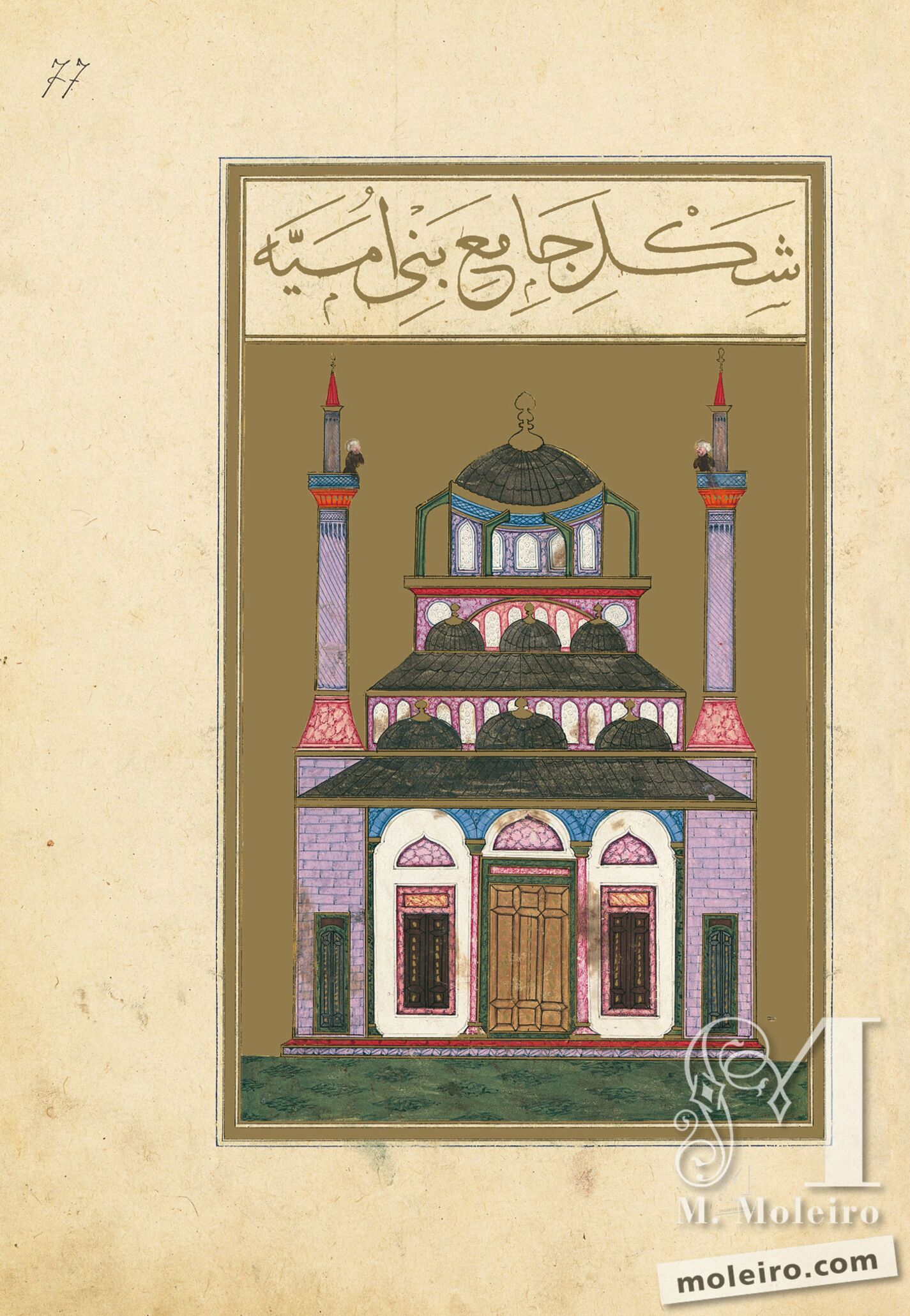Another wondrous building, well known to Muslims all over the world, was the Umayyad Mosque in Damascus, illustrated opposite the Lighthouse of Alexandria. The mosque was one of the first major architectural efforts of the first dynasty of the Islamic era, that of the Umayyads (ca. 650-751), who moved the capital to the ancient city of Damascus and built their Friday mosque upon an existing Christian church. The mosque is famous especially for the impressive mosaics around its courtyard that were probably the work of Byzantine artists hired by the young dynasty because of their superior skills, as had been the case slightly earlier of the Dome of the Rock in Jerusalem. A fifteenth-century anonymous Arab author described it as “one of the four most famous buildings in the world. Its walls are painted, its columns are covered in gems, gold and precious stones of wonderful colors…”.
However, although the Ottoman painter may have been aware of the fame of the Mosque of the Umayyads, he clearly had no knowledge of its appearance. In fact, he painted the familiar image of a sixteenth-century Ottoman mosque, albeit very stylized and with an entirely frontal perspective, with its central dome, smaller domes at the lower levels, needle-like minarets and a portico entrance. Curiously there is a muezzin on each of the two minarets, both ready for the call to prayer.
Stefano Carboni
The Metropolitan Museum of Art
Curatorial Assistant in Islamic Art
(Fragment of the Book of Felicity commentary volume)

Another wondrous building, well known to Muslims all over the world, was the Umayyad Mosque in Damascus, illustrated opposite the Lighthouse of Alexandria. The mosque was one of the first major architectural efforts of the first dynasty of the Islamic era, that of the Umayyads (ca. 650-751), who moved the capital to the ancient city of Damascus and built their Friday mosque upon an existing Christian church. The mosque is famous especially for the impressive mosaics around its courtyard that were probably the work of Byzantine artists hired by the young dynasty because of their superior skills, as had been the case slightly earlier of the Dome of the Rock in Jerusalem. A fifteenth-century anonymous Arab author described it as “one of the four most famous buildings in the world. Its walls are painted, its columns are covered in gems, gold and precious stones of wonderful colors…”.
However, although the Ottoman painter may have been aware of the fame of the Mosque of the Umayyads, he clearly had no knowledge of its appearance. In fact, he painted the familiar image of a sixteenth-century Ottoman mosque, albeit very stylized and with an entirely frontal perspective, with its central dome, smaller domes at the lower levels, needle-like minarets and a portico entrance. Curiously there is a muezzin on each of the two minarets, both ready for the call to prayer.
Stefano Carboni
The Metropolitan Museum of Art
Curatorial Assistant in Islamic Art
(Fragment of the Book of Felicity commentary volume)